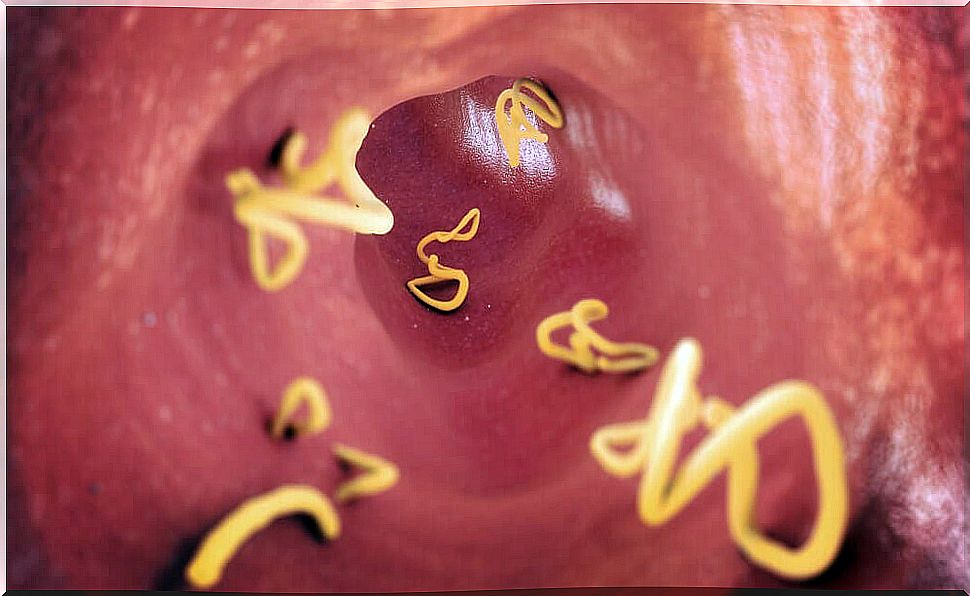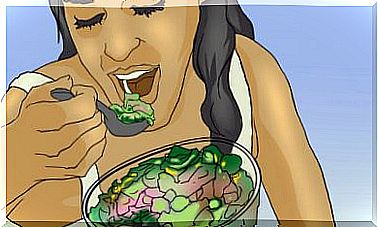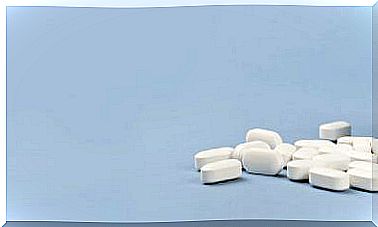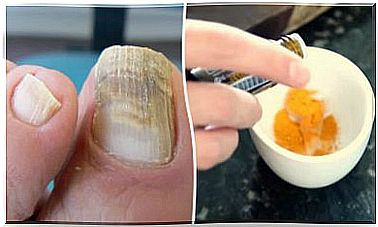What Is Hookworm And What Causes It?
Hookworm is an intestinal infection caused by parasites of the Nacator americanus and Ancylostoma duodenale species . It is within the group of soil-transmitted helminthiases that, according to the World Health Organization (WHO), affect more than 1.5 billion people in the world.
This disease, in particular, causes infection in some 740 million people in the humid tropical and subtropical zones. It is estimated that 10% of the world population has this parasite, which causes intestinal and respiratory symptoms.
For all these reasons, the condition is considered a global health problem. This parasitosis causes growth retardation in infants, a reduction in productivity in adults, among many other things. If you want to know more about it, keep reading.
Symptoms of hookworm
As indicated by the Centers for Disease Control and Prevention (CDC), hookworm is often asymptomatic in many cases. However, it is common for affected people to present an area of red and bulging skin, a fact that corresponds to the place of entry of the larvae of the parasites.
The larvae, once they enter the host’s bloodstream, travel through the heart and lungs to reach the small intestine. This can lead to fever, cough, wheezing, and breathing difficulties. Some may suffer at this stage eosinophilic pneumonia, that is, an autoimmune reaction that affects the lungs.
According to the MSD Manual, once the parasites lodge in the intestine, the patient may experience severe pain in the upper abdomen, loss of appetite, diarrhea, and weight loss. In children and in people with long-lasting infections, the situation can be a bit complicated, with some of the following events:
- Iron deficiency and anemia due to bleeding from the intestinal wall.
- Chronic malnutrition due to the loss of proteins in the blood plasma.
- Defecation characterized by the presence of blood in the stool.

How can you get the infection?
According to information from the Healthy Childrens Foundation, the infection occurs through contact with soil contaminated with human feces. The larvae, excreted with the stool of a sick person, can remain viable in the environment for 3 or 4 weeks and will infiltrate the epidermis of the new host as soon as they come into contact with it.
What animals can be infected?
Fact sheets on hookworm highlight that many carnivorous vertebrates can become infected. It is estimated that, in some countries, up to 96% of dogs and 80% of cats can be infested.
Even so, it should be noted that these species are hosts for the parasites Ancylostoma caninum and Ancylostoma ceylanicum . These are not common pathogens for humans, although they can cause episodes of skin lesions. As they are not specialized parasites in our species, the clinical picture is much less severe and the infection less common.
Diagnosis and treatment of hookworm
In general, the diagnosis of hookworm is easy and straightforward. The parasites reproduce in the intestine and release their eggs with the feces, so an analysis of the patient’s stool is more than enough to confirm the pathology.
According to the United States National Library of Medicine, the goals of hookworm treatment are to:
- Cure the infection.
- Treat the clinical complications caused by anemia.
- Solve malnutrition where it occurs.
Albendazole, mebendazole, or pyrantel pamoate are usually the parasite drugs of choice in these cases. In addition, anemia can be addressed with iron pills, and malnutrition with an increase in protein in the diet.
Hookworm Prevention
In countries with cold climatic conditions and scattered rainfall, this pathology is not a problem, since the larvae proliferate in humid environments with 18-25 ºC and with rains above 1000 mm / year. In dry climates and in direct sunlight, the larvae die in a short time.
For this reason, this risk is only considered in tropical and subtropical areas with low income or reduced health conditions. In these cases, it is recommended to follow the following indications:
- Do not walk barefoot on the ground in any environment where there is a risk of the disease. Remember that the larvae of these parasites penetrate the skin.
- Avoid eating unwashed food.
- As obvious as it sounds, in case of having the disease, it is essential to defecate in controlled environments where the stool is eliminated aseptically, never in the open air.

What is there to remember about this disease?
Hookworm is one of those infectious diseases that often go unnoticed by the general population, but are quite widespread in the poorest places. Although in many cases it is asymptomatic, over long periods of time it can cause anemia, malnutrition and more serious conditions.
For all these reasons, preventing contagion is essential. For that, it is convenient to prioritize hygiene and care. Try not to go barefoot on humid lands in hot regions, and clean all food well before consuming it.








